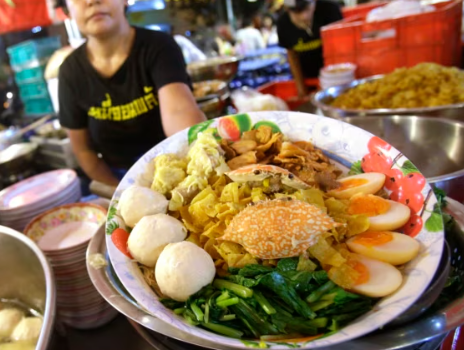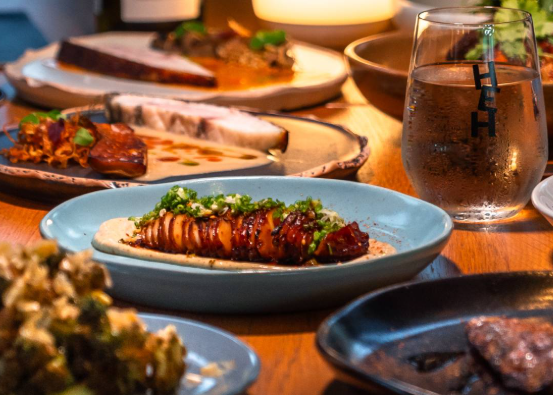
When news of Bangkok’s street food ban first broke, my initial response was one of disbelief, frustration, and a fair amount of swearing. However, after reflecting on the matter, I’ve realized that many of the arguments against the ban are not entirely accurate. While I can understand the outrage, I also think it’s important to consider a more balanced view of the situation. Much of the controversy seems to stem from the popular tourist spots like Khao San Road and Yaowarat, where street food is a major attraction. But the issue at hand isn’t just about these areas; it’s about how street food is integrated into the everyday life of Bangkok, particularly in more practical spaces like the central business district (CBD) and along major roads.
Bangkok is a thriving metropolis where millions of residents live and work, and it’s not just a tourist playground. While some may argue that the city’s vibrant street food culture is part of its charm, the reality is that Bangkok’s streets are often chaotic and difficult to navigate, especially for locals. The ban, in my opinion, is about addressing the everyday challenges that many residents face, rather than just catering to the demands of tourists or backpackers.
A Nod to Singapore’s Hawker Culture
One of the common comparisons that people make when discussing the street food ban is Singapore’s famous hawker centers. In Singapore, street food was banned decades ago, but the city’s hawker centers have since become a success, to the point of even earning Michelin stars for some of their food stalls. The move to regulated food courts has allowed the country’s food scene to thrive, and I don’t see why Bangkok can’t follow a similar path. The key difference is that in Singapore, the shift to organized food centers has led to a better-managed, more hygienic food scene, which is something Bangkok could certainly benefit from.
Street food enthusiasts often view the ban as a loss of authenticity, but what they fail to recognize is that it’s possible to preserve the essence of street food in more organized settings. These food courts, often open-air and located in designated areas, can replicate the street food experience while offering the added benefits of cleanliness, safety, and comfort. In fact, many of the stalls in Singapore’s hawker centers still serve the same delicious dishes, but in a more structured, regulated environment.
The Larger Picture: Bangkok’s Infrastructure
Let’s talk about the state of Bangkok’s streets for a moment. The city’s sidewalks are notorious for being poorly maintained, cluttered, and almost impossible to navigate, especially during peak hours. I recall my mother visiting and being unable to walk on Sukhumvit’s pavements because they were so badly damaged. If you’ve ever tried to move around Bangkok, you’ll understand just how frustrating it is. On street cleaning days, when food stalls are temporarily moved off the sidewalks, the city feels almost like a different place—cleaner, quieter, and easier to get around.
While traditional street food offers a sense of convenience, it also comes with downsides. The unregulated nature of many food stalls contributes to the clutter, traffic, and air pollution that plague the city. The idea behind the ban is to relocate these stalls to more appropriate locations, such as designated food courts, where people can enjoy a cleaner, more comfortable dining experience away from the fumes of city traffic.
The Issue of Business Losses
One of the main concerns raised by critics of the ban is the potential loss of income for street food vendors. But I believe this fear is largely unfounded. If handled correctly, the relocation of street food stalls to organized spaces could actually benefit vendors in the long run. These new food courts would provide a more stable environment for businesses, with better infrastructure and facilities. As for the price of food, there’s no evidence to suggest that prices will skyrocket once street food is moved to these designated areas. In fact, the cost of meals in air-conditioned malls and food courts is often very similar to what you’d pay for street food, so there’s little reason to expect a significant price increase.
One area that could pose challenges, however, is the relocation of grilled food stalls like Isaan-style barbecue and charcoal grills, which are harder to move due to ventilation issues. This will require careful planning and consideration to ensure that these popular stalls can continue to operate in a safe and efficient manner.
The Reality of Enforcement
In Thailand, the implementation of laws and regulations is often inconsistent. Past crackdowns on street vendors have typically been short-lived, with enforcement being sporadic at best. This raises doubts about how effective the street food ban will be in the long run. In other cities, similar bans have led to vendors finding creative ways to continue operating, such as walking slowly in circles with their food carts or moving their stalls to different locations when authorities aren’t looking.
The truth is that the street food ban may not be as dramatic as some fear. While there may be initial hiccups in enforcement, the overall shift could ultimately lead to a more organized and manageable food scene in Bangkok. It’s important to keep in mind that Bangkok is a rapidly evolving city, and this kind of change, while challenging, is part of the process of modernization.
Final Thoughts
While I have my reservations about the street food ban, I also recognize that progress is inevitable. Bangkok’s streets have been chaotic for far too long, and the ban could provide an opportunity for a cleaner, more organized city. The real challenge will lie in how this change is implemented and whether it can be done in a way that preserves the essence of street food culture while addressing the practical concerns of daily life in Bangkok.
In the end, the debate over the street food ban isn’t as simple as “good” or “bad.” It’s a complex issue with many layers, and it’s up to the city’s residents, visitors, and government to navigate it thoughtfully.








